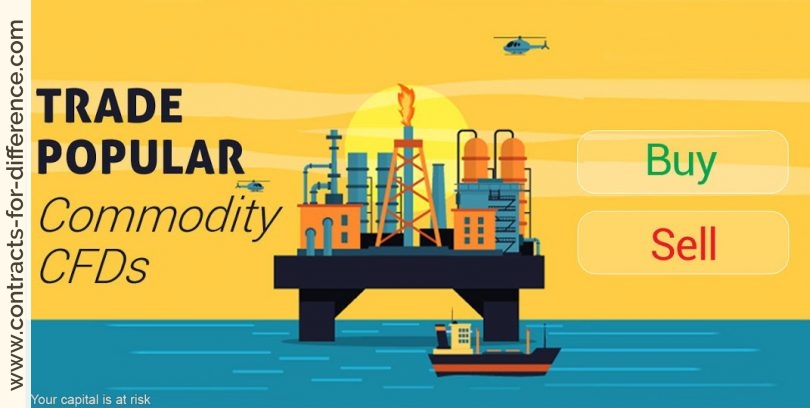For the active trader, the volatility of the oil markets provides many opportunities for profit. The price of oil is often seen as one of the main barometers of the health of the global economy, with a strong relationship between economic growth and the demand for oil and with the benchmark rate being the West Texas Intermediate (WTI) light crude futures contract. Oil prices are also affected by perceived shortages and by oversupply (see http://www.eia.doe.gov/ for latest supply/demand oil figures), and weather conditions can have a direct impact on the prices – for instance constraints over supply resulting from the political unrest in North Africa and the Middle East have pushed oil prices up. However, oil is generally regarded as a relatively safe bet even when the wider stock market isn’t performing that well – after all people still have to use oil irrespective of the economy so there will always be healthy demand remains for it even though it is not as much of a hedge as gold.
A truly globalised, 24-hour market, oil is highly sensitive and prices are constantly moving – making it an ideal instrument for day traders looking for fast movements. One of the easiest ways to trade on oil prices is by using contracts for difference (CFDs). Like gold CFDs, oil is one of the most commonly traded markets which means that you should be able to get in or out whenever you want irrespective of the size of the trade. Crude oil CFDs are available on two main products, either the US WTI/Light Crude as traded on the New York Exchange (NYMEX), or the Brent crude which is traded on the Intercontinental Exchange (ICE). Both WTI and Brent Crude are priced from the corresponding futures contracts and are practically available round-the-clock from Monday to Friday. You can also trade heating oil CFDs.
Compared to the futures market, contract sizes for CFD deals can be much smaller. For instance, with certain CFD providers, the minimum commodity CFD lot size for US crude oil can be just 25 CFD contracts (which is the equivalent of 25 barrels of underlying) – compare that to a minimum trading size of 1,000 barrels when trading on the futures market!
One crude oil CFD is usually based on 100 barrels, which means that every dollar change in the quoted oil price corresponds to $100 profit or loss on the CFD. In other words a 1 cent in the oil price would result in a profit or loss of a dollar for each CFD held. The spread is usually 5 to 6 points while the margin required to trade the CFD may be 3%, which is a common rate for commodities CFDs, or better. As with all derivatives, oil CFDs give you a substantial amount of leverage on your money, which means profits can be substantial, although losses can also mount up quickly.
As an example of a winning trade, say you were bullish on US crude, which was quoted at $78.25 to $78.50. The higher price is for a long contract, and the low price for going short. The trade is commission free, as with most commodities, with the dealer making a profit from the spread of $.25.
Buying five crude oil CFDs at a margin rate of 3% would need $78.50 x 5 x 100 x 3%, which is $1177.50, in your account, and for this you will control $39,250 worth of oil. Perhaps you are day trading, and in the afternoon the price rises to $80.75 to $81.00, an increase of $2.50.
When you sell the contracts to exit the trade, the value is $80.75 x 5 x 100, or $40,375. As you did not hold the position overnight, there is no interest charge, so your net profit is $1125. This is the example of leverage that you can enjoy when trading CFDs. The return on your capital invested is over 95% when the price of crude oil increased only 3%.
Of course, this degree of leverage can work against you if your trade is in the wrong direction, and this must always be borne in mind when using derivatives, or leveraged financial products. Say you entered the same trade, buying five crude oil CFDs at a quoted price of $78.50. This time the price of oil fell, and when you reviewed your trade you decided that the reasons that you entered it in the first place were wrong, and it was necessary to exit and cut your losses.
When you sell your contracts the quoted price is $76.75 to $77. You must sell at the lower price, which means the contracts are worth $76.75 x 5 x 100, or $38,375. This amounts to a loss of $875. With a drop in oil price of less than 2%, you find that you have lost nearly 75% of your capital.
Strategies include the old time tested ‘buy low, sell high’ or taking a position to profit from price breakouts. You can also acquire exposure in oil indirectly by buying in oil companies such as Royal Dutch Shell and Tullow Oil.
Incidentally, CFDs are a practical way to hedge physical investments in energy, since investors can utilise any losses sustained on a CFD to offset capital gains tax on other investments.
What can you trade?
It is possible to trade various many different CFDs related to oil prices. These include -:
- Heating oil, for which there is a liquid US-based quote with several expirations
- UK Oil and Gas sector CFDs
- USA Oil and Gas sector CFDs
- Individual oil share CFDs including such varied names as Royal Dutch Shell, Tullow Oil, Statoil, Total-Fina, Exxon Mobil and many smaller oil company stocks around the world
- USA Natural Gas CFDs with various expirations
The most simple way to gain exposure to the energy market is through a CFD on the underlying commodity, such as crude oil, heating oil or gas oil. Note also that within futures markets there are several expiration months quoted – for instance at the time of writing (August 16th), September and December CFDs are available. The difference in prices between the various contracts is a reflection of the the cost of carry and other seasonal factors as it would for all commodities.
What this means in practice is that you do not have to incur daily financing interest on these CFDs, because all trades are rolled over into expiry and the contract values already price in the cost of carry.
CFD Trading Example: Spot Brent Crude Oil
You believe the price of Brent Crude Oil is set to fall due to a decrease in demand. The current broker’s quote is 6443 – 6448.
You decide to sell 20 Spot Brent Crude Oil CFDs at 6443.
Things to note:
- The tick size for Spot Brent Crude Oil is 1, so if it moves from 6443 to 6453, that represents 10 ‘ticks’.
- The base currency of the underlying Brent Crude Oil market is USA dollars, so this is what you will be trading in.
By the following day, you notice that the price has risen and the broker’s quote is 6462– 6467. You decide to close your position and buy at 6467.
This realises a loss of (6467-6443) X your stake of 20 = USD$480.
Note: In this example daily financing costs have not been included for simplicity.
CFD Trading Example: Spot WTI Light Crude Oil
You’ve noted increased speculation in the price of Spot WTI Light Crude Oil and believe the price will start to rise. The current broker’s quote is 72.25 – 72.30.
You decide to buy 30 WTI Light Crude Oil CFDs at 72.30.
Things to note:
- The tick size for Spot WTI Light Crude Oil is 0.01, so if it moves from 72.25 to 72.35, that is 10 ‘ticks.’
- The base currency of the underlying Brent Crude Oil market is USA dollars, so this is what you will be trading in.
In the next few days, you note that the price has risen and the broker’s quote is now 73.12-73.17. You decide to close part of your position and sell 15 CFDs at 73.12.
This realises a profit of (7312-7230) X your stake of 15 = USD$1,230.
You keep the remaining 15 stakes as you somehow feel there is still space for further price increases. The next day day you notice that the price rose as you anticipated. The broker’s quote is now 73.82-73.87.
You sell the remaining stakes to close out the position at 73.82.
This realises a profit of (7382-7230) X your stake of 15 = USD$2,280.
Total Profit = USD$1,230 + USD$2,280 = USD$3,510.
Note: In this example daily financing costs have not been included for simplicity.
As opposed to the futures markets, there isn’t a standardized size that you trade when trading CFDs. You can trade as much or little as your account allows. For many traders it is difficult for them to come up with the margin to trade the standard 1,000 barrel contract. In fact, at the time of writing it takes approximately $4,340 of margin funds to trade one futures contract. When you trade contracts for differences, you can trade the equivalent of one barrel if you need to – and this makes it more practical for the average everyday trader. It is worth noting that some providers offer ‘mini contracts’ on oil which allows investors to deal in smaller sizes unlike futures where you are restricted to trade at the full size. And naturally with a CFD there is no physical delivery so you won’t need to worry about barrels of crude being delivered to your house!
Buyer Beware
Be wary that Oil CFDs are usually denominated in dollars so if your brokerage account is denominated in Sterling or Australian Dollars this can potentially expose you to currency fluctuations. For this reason CFD traders located in the UK might be better off using spreadbets to trade the oil price as these are denominated in the currency of your account.
Oil is one of the more volatile markets so if you are looking to trade the price of oil over longer timeframes such as a few months, then you need to use relatively wide stops compared to short-term trading. Note also that oil futures being such a volatile market, especially around expiry date and it is not unheard of that the prices changes by $4 which is equivalent to a $400 movement in the value of each oil CFD. This means that it is especially important that you use leverage responsibly and that you have appropriate stop loss orders in place when trading oil CFDs. A good rule of thumb is to trade, say, one CFD per $1,000 held on deposit in which case you would stand to make $1,000 on a $10 movement (1,000 pips) in the crude oil price.






